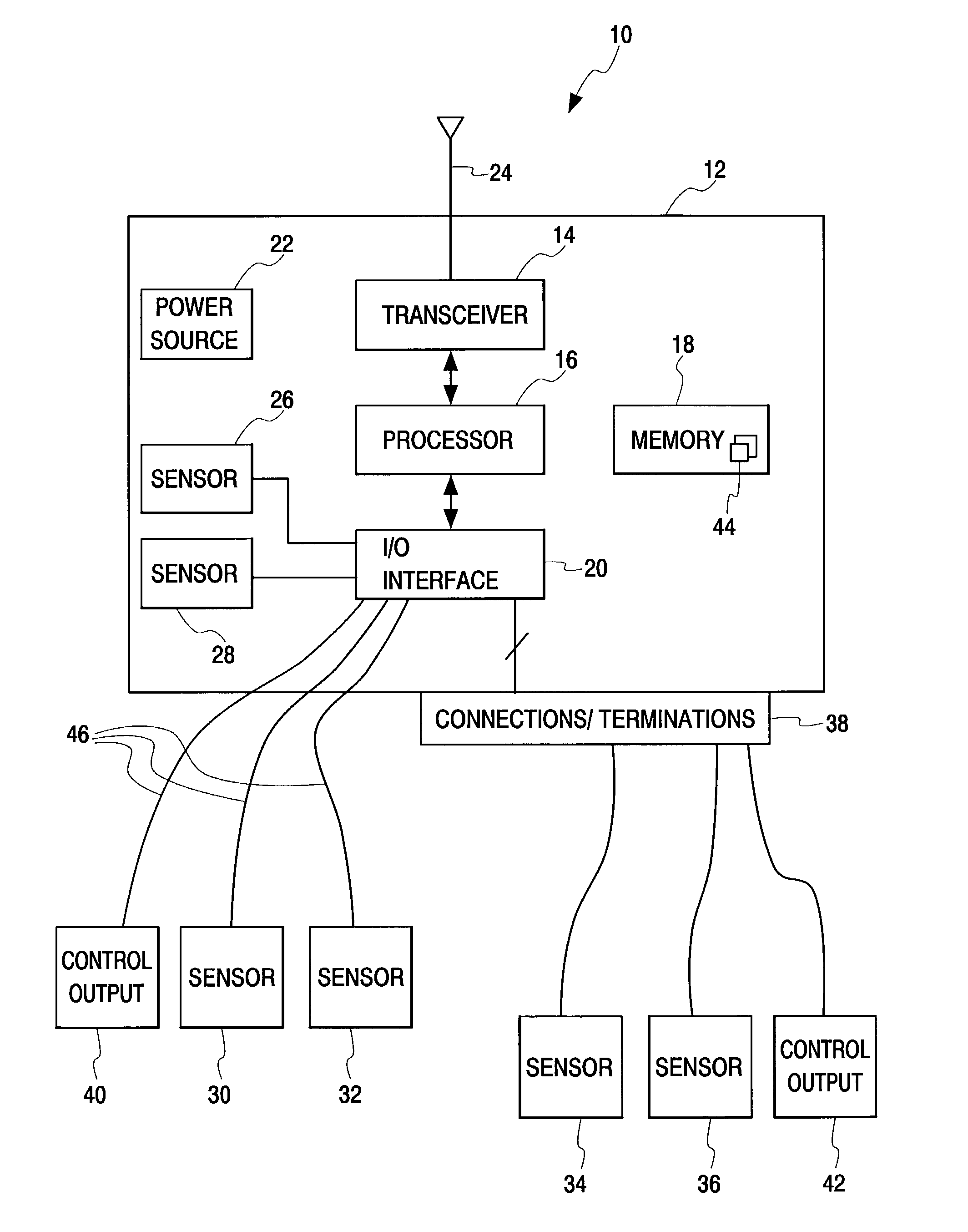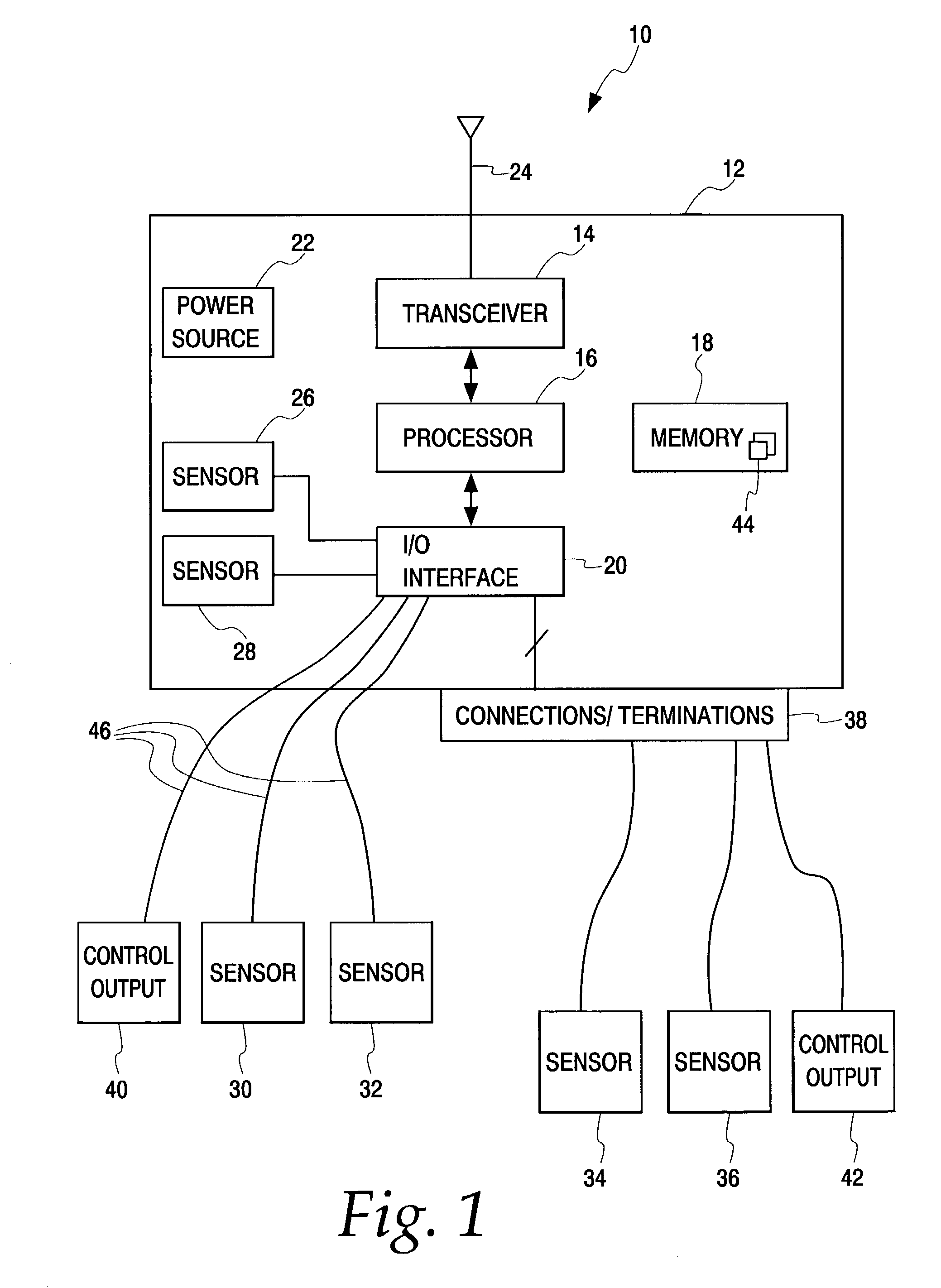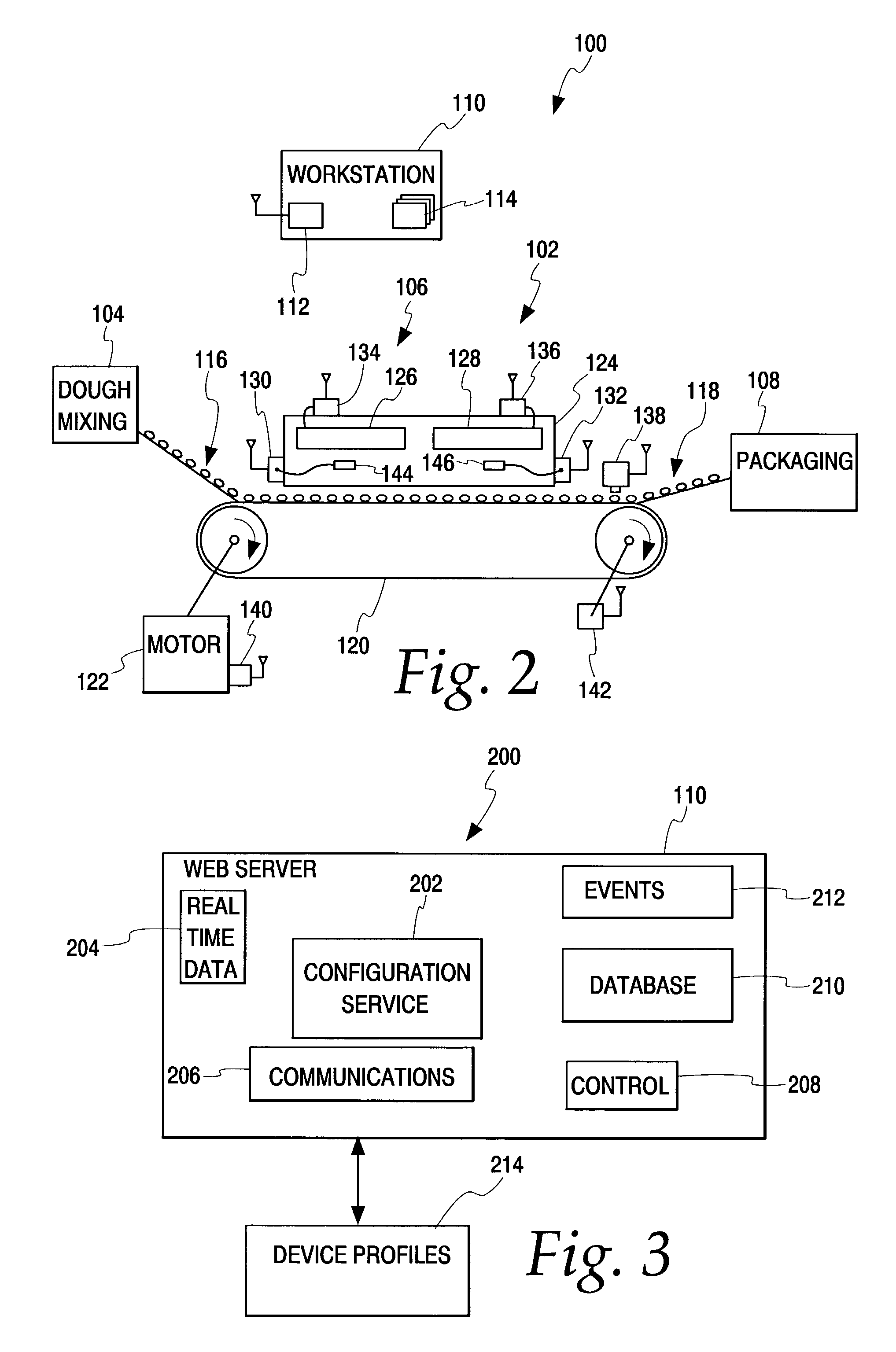Appendable system and devices for data acquisition, analysis and control
a technology of data acquisition and analysis, applied in the field of appendable systems and devices for data acquisition, analysis and control, can solve the problems of system installation and commissioning, system reconfiguration or modification difficulty, and equipment manufacturer may not provide any mechanical interface, etc., to achieve high degree of application flexibility, high scalable monitoring and/or control, and easy addition
- Summary
- Abstract
- Description
- Claims
- Application Information
AI Technical Summary
Benefits of technology
Problems solved by technology
Method used
Image
Examples
Embodiment Construction
[0019]The appendable system and devices described herein may be appended to process control equipment and / or other entities to perform data acquisition activities, data analysis activities and / or process control activities. Generally speaking, the appendable system and devices described herein may be used to provide a highly scalable monitoring and / or control system that can be easily added, appended or retrofitted to a process system or plant in a cost effective manner. Additionally, the appendable system and devices provide a relatively high degree of application flexibility by, for example, facilitating physical modification and / or reconfiguration of the control system, which may involve adding and / or physically moving sensors, actuators, equipment, etc. associated with the process control system.
[0020]More particularly, the appendable system and devices may be physically mounted, attached or appended to one or more surfaces or pieces of equipment within a new or established proc...
PUM
 Login to View More
Login to View More Abstract
Description
Claims
Application Information
 Login to View More
Login to View More - R&D
- Intellectual Property
- Life Sciences
- Materials
- Tech Scout
- Unparalleled Data Quality
- Higher Quality Content
- 60% Fewer Hallucinations
Browse by: Latest US Patents, China's latest patents, Technical Efficacy Thesaurus, Application Domain, Technology Topic, Popular Technical Reports.
© 2025 PatSnap. All rights reserved.Legal|Privacy policy|Modern Slavery Act Transparency Statement|Sitemap|About US| Contact US: help@patsnap.com



